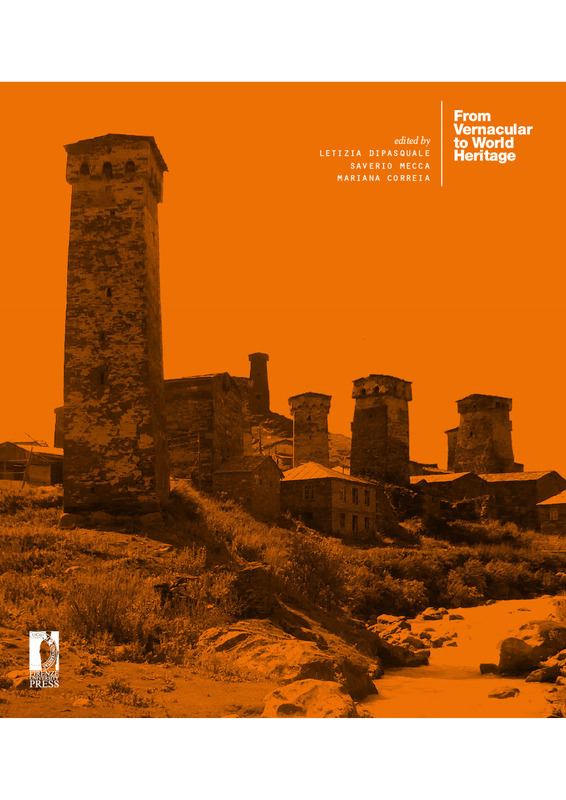JavaScript is disabled for your browser. Some features of this site may not work without it.
Buscar en RiuNet
Listar
Mi cuenta
Estadísticas
Ayuda RiuNet
Admin. UPV
Understanding the dimension of historical evolution
Mostrar el registro sencillo del ítem
Ficheros en el ítem
| dc.contributor.author | Vegas López-Manzanares, Fernando
|
es_ES |
| dc.contributor.author | Mileto, Camilla
|
es_ES |
| dc.contributor.author | Diodato, Maria
|
es_ES |
| dc.contributor.author | Songel Gonzalez, Juan María
|
es_ES |
| dc.date.accessioned | 2023-12-26T09:39:13Z | |
| dc.date.available | 2023-12-26T09:39:13Z | |
| dc.date.issued | 2021 | |
| dc.identifier.isbn | 9788855182928 | |
| dc.identifier.uri | http://hdl.handle.net/10251/201099 | |
| dc.description.abstract | [ES] Los asentamientos históricos son como palimpsestos que, en muchos sentidos, se han estratificado a lo largo de los siglos en términos urbanísticos, arquitectónicos y constructivos. El aspecto actual de un determinado centro histórico o núcleo vernáculo es el resultado de múltiples capas y fases de su vida, que se han ido superponiendo. Entre ellas se incluyen las intervenciones directas de construcción, transformación o rehabilitación, así como la degradación de los materiales, las lesiones estructurales o los incidentes sufridos. La historia no escrita ni documentada se refleja a menudo en la sustancia construida de los edificios que componen estos pueblos y ciudades (Mileto, Vegas, 2015). Comprender la dimensión de la evolución histórica de su urbanismo, arquitectura y construcción nos permite respetar conscientemente sus valores, introduciendo los cambios y transformaciones necesarios para adaptarlos convenientemente a la vida contemporánea, y escribir este palimpsesto sin tener que borrar o anular completamente los fragmentos escritos en el pasado. | es_ES |
| dc.description.abstract | [EN] Historic settlements are like palimpsests that, in many ways, have become stratified over centuries in urban, architectural and constructive terms. The current appearance of a given historic centre or vernacular nucleus is the result of multiple layers and phases of its life, which have been superimposed. These include the direct interventions of construction, transformation or retrofitting, as well as the degradation of materials, structural lesions or incidents suffered. Unwritten and undocumented history is often reflected in the built substance of the buildings that make up these towns and cities (Mileto, Vegas, 2015). Understanding the dimension of the historical evolution of their urbanism, architecture and construction allows us to consciously respect their values, introducing the necessary changes and transformations to suitably adapt them to contemporary life, and to write this palimpsest without having to completely erase or cancel the fragments written in the past. | es_ES |
| dc.language | Inglés | es_ES |
| dc.publisher | Firenze University Press | es_ES |
| dc.relation.ispartof | From Vernacular to World Heritage | es_ES |
| dc.rights | Reconocimiento - No comercial - Compartir igual (by-nc-sa) | es_ES |
| dc.subject | Patrimonio mundial | es_ES |
| dc.subject | Conservación del patrimonio arquitectónico | es_ES |
| dc.subject | Arquitectura de tierra | es_ES |
| dc.subject | Arquitectura vernácula | es_ES |
| dc.subject | Vernacular architecture | es_ES |
| dc.subject | Earthen architecture | es_ES |
| dc.subject | World heritage site | es_ES |
| dc.subject | Architectural heritage conservation | es_ES |
| dc.subject | Architectural heritage enhancement | es_ES |
| dc.subject.classification | COMPOSICION ARQUITECTONICA | es_ES |
| dc.title | Understanding the dimension of historical evolution | es_ES |
| dc.type | Capítulo de libro | es_ES |
| dc.identifier.doi | 10.36253/978-88-5518-293-5 | |
| dc.rights.accessRights | Abierto | es_ES |
| dc.contributor.affiliation | Universitat Politècnica de València. Escuela Técnica Superior de Arquitectura - Escola Tècnica Superior d'Arquitectura | es_ES |
| dc.description.bibliographicCitation | Vegas López-Manzanares, F.; Mileto, C.; Diodato, M.; Songel Gonzalez, JM. (2021). Understanding the dimension of historical evolution. En From Vernacular to World Heritage. Firenze University Press. 44-51. https://doi.org/10.36253/978-88-5518-293-5 | es_ES |
| dc.description.accrualMethod | S | es_ES |
| dc.description.upvformatpinicio | 44 | es_ES |
| dc.description.upvformatpfin | 51 | es_ES |
| dc.type.version | info:eu-repo/semantics/publishedVersion | es_ES |
| dc.relation.pasarela | S\433069 | es_ES |








